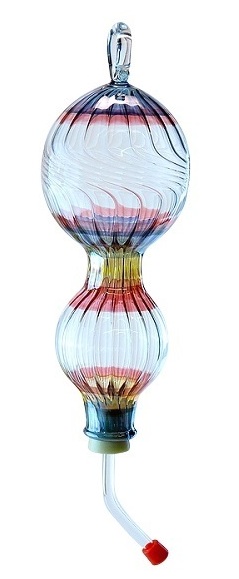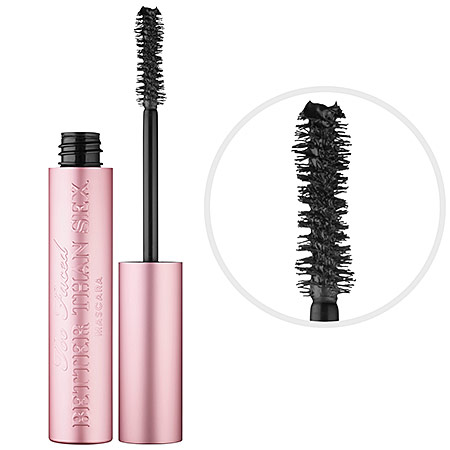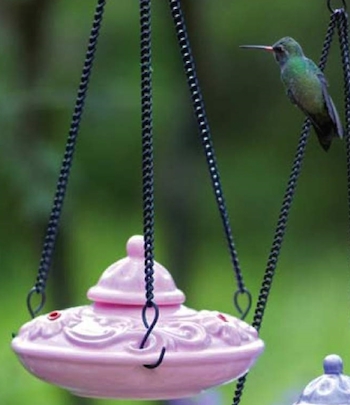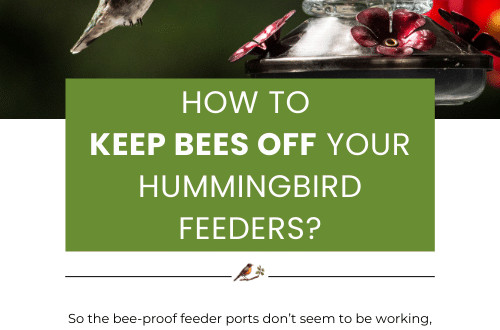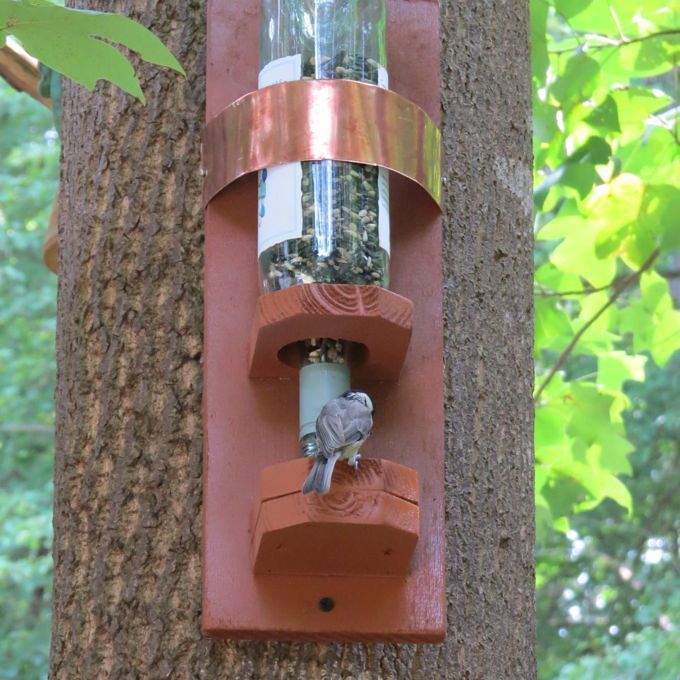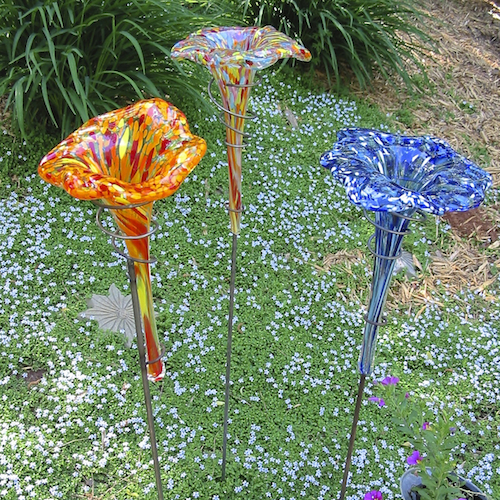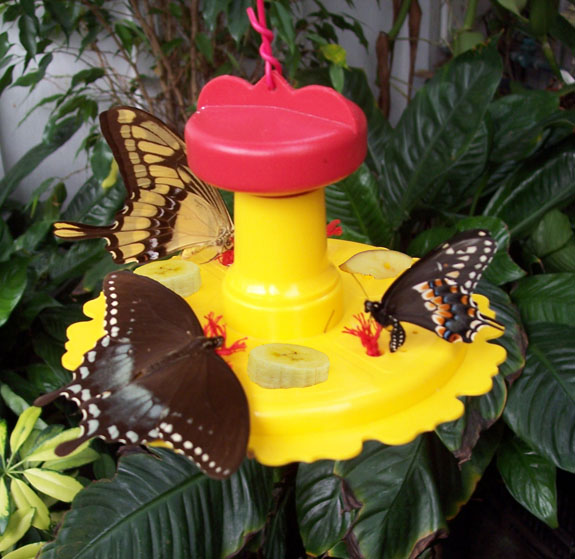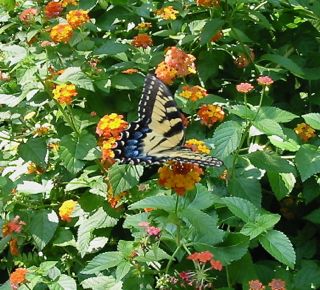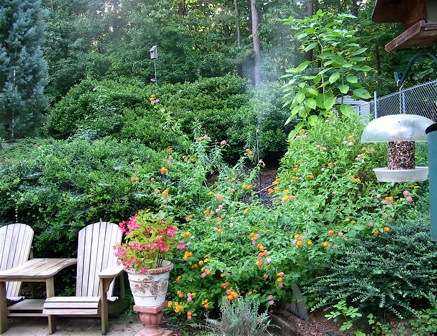-
Hummingbird Feeders and Mascara?
What could the two possibly have in common, make-up and hummingbird feeders? Seems like a strange combination… but it’s in the applicator brush. Save it, save every one prior to tossing your mascara!
Regardless of using tube style hummingbird feeders or basin designs – they all have feeder ports which are difficult to clean. A mascara brush is the absolute perfect solution for reaching in and and scrubbing these tiny ports. Of course you’ll want to first sanitize the brush by running it through your dishwasher, or place it in boiling water to completely remove all residue as chemicals are harmful, probably even fatal to hummingbirds.
The tiny brushes are ideal for all types of other bird feeders and their hard to clean spots. These small spaces that are hard to reach usually accumulate crud (another word for mold and bacteria build-up). It’s imperative to bird’s health to keep any feeder from growing crud in the first place.
And forget about the “red myth” for both nectar and feeders themselves… it’s not true! We think the tiny sprites actually prefer home-made nectar over commercial mixes. Plain table sugar and water is it, that’s all you need. 1 cup sugar to 4 cups of water. Store nectar in the fridge for up to two weeks. No need to even boil the water, but we boil one cup just to dissolve sugar more effectively. Adding 3 cups of cold water also alleviates any wait for cooling time. You can fill feeders immediately and hang.
So many fun styles and colors that add interest to the garden, deck, patio or balcony! Hummingbirds will go for them provided nectar is fresh and there’s no other pests around causing competition (ants. bees, wasps and yellow jackets). Leaking sugar water is the main culprit in attracting pests, so keep feeders clean and use an ant moat if the need arises. Place feeders away from windy areas as a rocking/moving feeder causes spillage. The sweet sticky stuff is a magnet for other visitors who are not so welcome.
Thanks Sephora for the mascara image above!
-
An Old Favorite Wild Bird Feeder is Back
It takes all kinds… all kind of feeders that is. For suet, peanuts, mealworms, nectar, fruit, jelly, nyjer, where does one start? Let’ go with basic seed in a not so basic feeder! Headed to a house-warming or birthday party? Something like this wild bird feeder is perfect when you’d like to bring a little more than a bottle of vino. Long after consumption, this gift keeps on giving! Even if the recipient isn’t into the birding scene… it’s a fantastic way to to introduce them to one of the fastest growing and most enjoyable hobbies around!
Handcrafted in GA, the bottle feeder quickly mounts just about anywhere, and birds flock to it immediately! The stash stays dry and protected from elements, while drainage in the tray keeps things from getting messy. Black oil sunflower or mixed seed works best, we prefer sunflower hearts or a no-waste mix as it leaves little ground mess. Many feathered species prefer sunflower hearts too; chickadees, titmice, nuthatches, cardinals, bluebirds will eat this seed in winter, finches and woodpeckers… to name just a few of the usual suspects!
For a limited time, the bottle feeder is back because the artist says they just take too long to make! Wildly popular on Pinterest a few years ago, the bird feeder looks like something you could easily make yourself, maybe so if you’re the handy type? The one thing we do know is birds love this feeder and it’s perfect for year-round use.
-
Butterfly Feeders for Unique Garden Accents and Monarchs
Buzz about the Monarch’s dwindling population is more than justified. You may have heard about it, but if not check this fact: Since the mid-90’s their decline has reached 90% from the 20-year average. What’s this mean in terms of real numbers? Swap monarchs for people for a second, every person in the US would be gone except for those living in just two states!
One of the biggest reasons for their decline is believed to be the disappearance of milkweed- the Monarch caterpillar’s only food source, and also the only plant on which Monarchs will lay their eggs. To name a few other culprits; urban sprawl, extreme weather, new farming practices and illegal logging in the butterflies’ winter habitat in Mexico.
Offering suitable habitat and butterfly feeders really does help the local Monarch population. Don’t bother with houses… they don’t use them! Both can be fantastic and unique garden accents – with feeders being much more useful. Butterflies also adore leaf misters, set one up near lantana or any other nectar-producing plant and you’re bound to see some winged action!
The butterfly feeders above are handmade, blown glass flowers on a 36-inch stake. They’re versatile for nectar or fruit, and for songbirds too. The hanging butterfly feeder below has been tested and approved by butterfly experts. A special combination of wicks and tubes mimic real flower blossoms, the design and color attracts butterflies and the nectar reservoir size is ideal to minimize spoilage.
This season, Swallowtails have been spotted in our butterfly habitat, but no Monarchs yet 🙁 Still a few months for their presence in the southeast… we’ll continue to feed and keep watch for the winged wonders!

